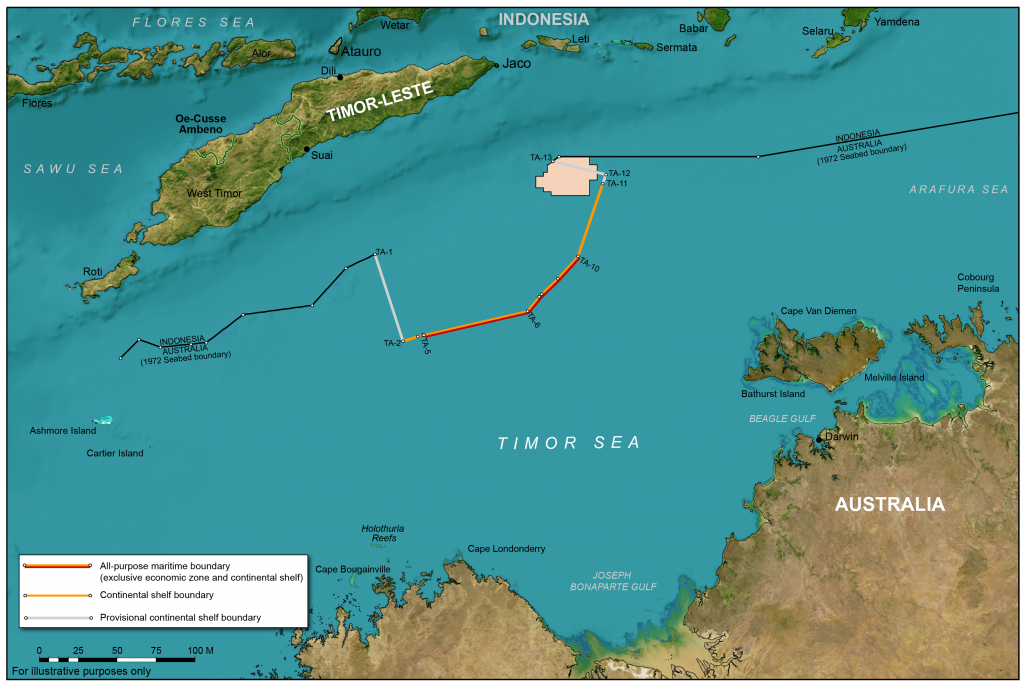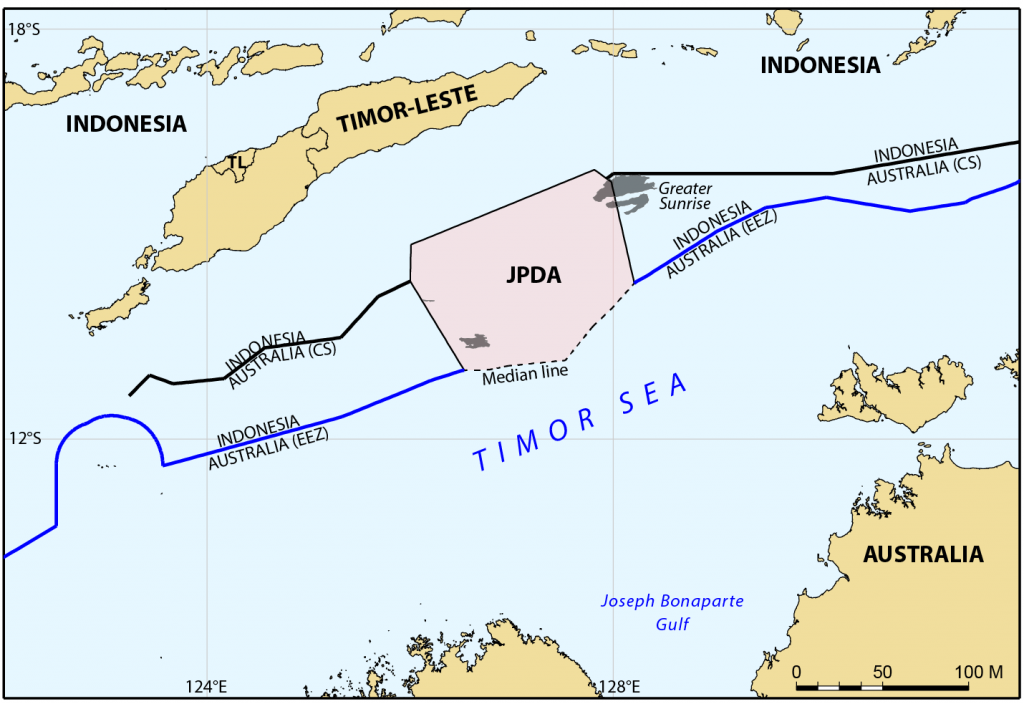Timor-Leste and Australia reach a Historic Agreement in the Timor Sea
Copenhagen Agreement
Timor-Leste (formerly East Timor) and Australia have reached agreement on their maritime boundary in the Timor Sea. This breakthrough ends 15 years of dispute over their boundary and access to lucrative petroleum resources. The agreement was reached in Copenhagen on the evening of 30th August, the 18th anniversary of East Timor’s overwhelming vote for independence in 1999.
Compulsory Conciliation
These proceedings started in April 2016 when Timor-Leste initiated compulsory conciliation proceedings against Australia under Annex V (and article 284) of the UN Convention on the Law of the Sea (UNCLOS). A five-strong Conciliation Commission was appointed under the Chairmanship of Danish Ambassador Peter Taksøe-Jensen. The delegations were led, for Timor-Leste, by chief negotiator Kay HE Rala Xanana Gusmão and agent H.E. Minister Hermenegildo Pereira; for Australia by agent John Reid and co-agent Katrina Cooper. Early preliminary discussions concerned legal procedures and a decision on the competence of the Commission. After initial public statements by both Parties in The Hague in August, a series of six confidential meetings between the Commission and the Parties took place, culminating in the historic agreement on 30th August 2017.
The agreement is a package that, in addition to the maritime boundaries, addresses the legal status of the Greater Sunrise Gas Fields, the establishment of a Greater Sunrise special regime, the process for deciding how to develop the resource, and the sharing of revenues. The details of the agreement remain confidential until the remaining issues have been resolved.
A Brief History of the Dispute
The history of the dispute has its roots in the invasion of Timor-Leste by Indonesia in 1975 and the 1989 Timor Gap Treaty whereby Australia and Indonesia agreed to divide up the resources of the Timor Sea in a ‘Zone of Cooperation’. The major Greater Sunrise Fields were discovered in 1974, just prior to the withdrawal of Portugal as the colonial power. In 1997 Australia and Indonesia agreed a further EEZ boundary treaty (though still to be ratified) that followed the median line across the Timor Sea. All of this occurred while Timor-Leste was under Indonesian military occupation.
Timor-Leste Independence
In 1999 following the UN-sponsored independence referendum, Timor-Leste began the transition to Statehood and finally achieved independence on 20 May 2002. However two months prior to this Australia excluded maritime boundary disputes from compulsory jurisdiction allowing it to refuse to allow any court to settle the boundary with Timor-Leste. This declaration by Australia was to lead fifteen years later to the instigation by Timor-Leste of the compulsory conciliation proceedings, all other dispute resolution options being closed to it.
On the day of its independence Timor-Leste signed the 2002 Timor Sea Treaty with Australia. This set up a provisional arrangement to exploit the resources in the Joint Petroleum Development Area (JPDA), pending the final determination of maritime boundaries consistent with international law. The Parties also signed a unitisation agreement for the exploitation of the Greater Sunrise Field.
The JPDA, Greater Sunrise, and Australia-Indonesia boundaries in the Timor Sea
(from Fietta and Cleverly, A Practitioner's Guide to Maritime Boundary Delimitation)
CMATS Treaty
In 2004, Australia and Timor-Leste started negotiations on a maritime boundary. The two parties had significantly different positions and it was not possible to reach an agreement on the boundary. The Parties however did agree to the CMATS (Certain Maritime Arrangements in the Timor Sea) Treaty that set up a fifty-year moratorium on maritime boundary claims, increased Timor-Leste’s share of Greater Sunrise from eighteen to fifty percent, and allocated EEZ rights over the JPDA to Timor-Leste. The intention of CMATS was to facilitate the development of Greater Sunrise though no agreement could be reached on the development concept and the only major production to-date has been from the Bayu-Undan Field in the JPDA.
Conciliation
By 2016, Timor-Leste had proposed various steps to facilitate agreement on permanent maritime boundaries but Australia was unwilling to agree to any such steps. Timor-Leste then decided the only recourse was to compulsory conciliation under UNCLOS.
The initial notification of the conciliation to Australia was made in April 2016. As part of the process Timor-Leste unilaterally terminated the CMATS Treaty, and also withdrew other related cases concerning espionage and seizure of documents by the Australian Security Intelligence Organisation.
Agreement details
The package of measures includes the definition of a permanent maritime boundary, and details of the process to be followed to develop the Greater Sunrise Gas Fields. It also addresses a special regime for Greater Sunrise and the sharing of revenues from the field.
Closing the Timor Gap
This new agreement closes the Timor Gap - created when Australia and Indonesia agreed their seabed and EEZ boundaries either side of Timor-Leste. It represents a significant step towards the completion of Timor-Leste's sovereign entitlements. All that remains are the boundaries with Indonesia to the north, east , and west.

The final agreed maritime boundary, and the Special Regime Area for Greater Sunrise
Further reading:
Crossing the Line, Kim McGrath, Redback publishers 2017.
Shakedown, Paul Cleary. Allen and Unwin, 2007.
More information can be found on the PCA website at: https://pca-cpa.org/en/cases/132/
